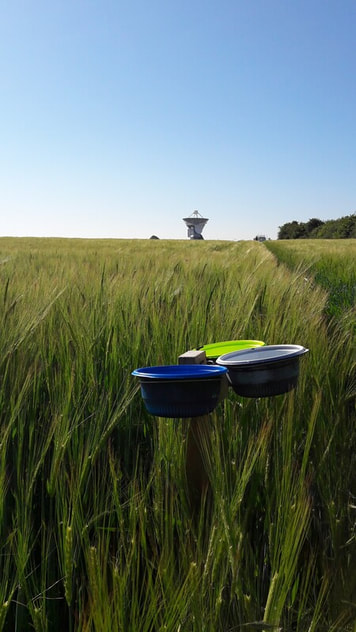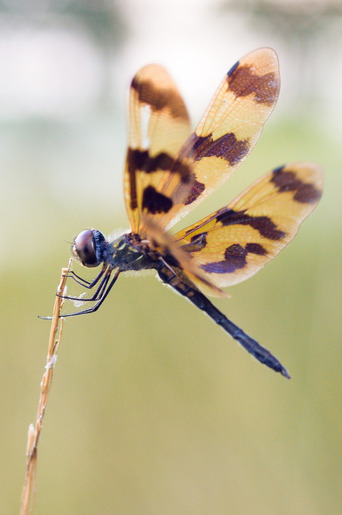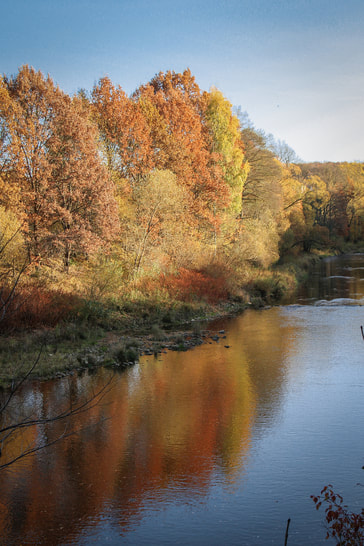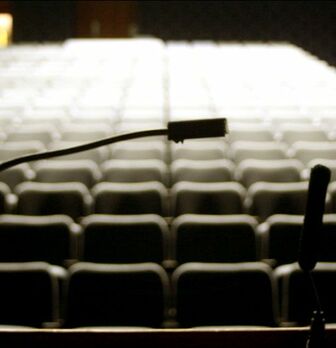Dual-Polarisation Weather Radar for Advanced Monitoring of Aerial Biodiversity (BioDAR)
This is a large, NERC and Gates Foundation-funded project that is attempting to use weather radar networks to monitor insect biomass across the UK and internationally. The project team involves an interdisciplinary collaboration between radar scientists (Ryan Neely, Maryna Lukach, Freya Addison) and ecologists (Chris Hassall, Elizabeth Duncan, Bill Kunin and Tom Dally).
The project has three main stages. First, we will produce 3D models of different species of insect using high-resolution scanners at the Natural History Museum in London. The 3D models will be used to predict what a radar would see if it was looking at an insect. Second, we will visit a series of locations around the UK to collect insects using a helikite, a modified balloon with a large net that sails up to 1,000m high. Researchers will compare the insects collected using the helikite to the information collected by local radar. Finally, we will create a map of insect populations in the UK, showing areas of high and low insect diversity and abundance. This map will help scientists to see how man-made changes to the environment are affecting wildlife. In particular, ecologists are looking into whether areas of high light pollution, urban areas, or intense agriculture have a negative impact on insect populations. You can find out a lot more about the project at https://biodarproject.org/. |
Biological responses to global changeA number of lab members are involved in research on the biological impacts of (i) climate change and (ii) urbanisation. Our work investigates changing geographical (distributions) and temporal (phenology) patterns of species occurrence using historical datasets. It is vital to evaluate the capacity of different species to respond to environmental change, as those species that cannot respond face an uncertain future. Principally we use insects (Odonata, Hymenoptera, Syrphidae) as well as mammals and lizards as model systems for investigating these topics.
Key papers:
|
Freshwater ecology and conservationFreshwater comprises only a very small proportion of all the water on earth but is vital to the functioning of terrestrial ecosystems. Our research focuses on the ecology of ponds (lentic water bodies with an area <2ha), which dominate many landscapes and contribute an enormous amount of biodiversity to the regional species pool. Despite their great number and importance, these small habitats are relatively poorly understood both in terms of what drives their biodiversity and how that diversity changes over time. One interesting aspect of ponds is their use to provide ecosystem services (flood control, pollution reduction, aesthetics) in urban areas. My research focuses on how services can be maintained or enhanced while maximising the contribution of ponds to biodiversity.
Key papers:
|
Evolution of insectsAlongside ecological research, we are involved in work on a number of evolutionary topics. It has often been said that wild animals (and insects in particular) do not live long enough to experience aging in the wild. Our work has demonstrated that wild damselfly populations do show aging in the wild. We are also involved in work on the evolution of mimicry, using the hoverflies (Diptera: Syrphidae) that mimic stinging bees and wasps (Hymenoptera) as a model system. Finally, we are interested in the ways that form and function interact with the environment in the case of insect flight.
Key papers:
|
Application of technology to teachingAs well as scientific research, the lab maintains a funded program of research on pedagogical advances in “blended learning” – the application of technology to complement face-to-face teaching. Particular areas of interest include barriers to the use of technology, and testing the effectiveness of teaching interventions. Much of this research is conducted as part of the work of the University of Leeds Bioscience Education Research Group (ULBERG).
Key papers: |





